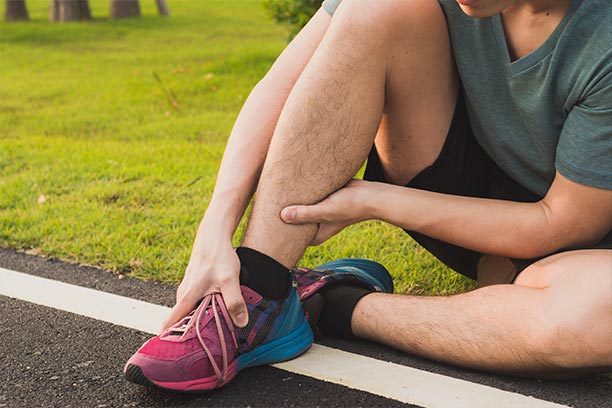Ankle pain is a common complaint among athletes and sports enthusiasts of all ages. It can stem from various factors and significantly affect performance and quality of life. Understanding the causes and knowing how to prevent and treat this pain can help maintain health and continuity in sports activities. Here are some useful insights on the causes of ankle pain and effective solutions:
1. Common Causes of Ankle Pain:
- Sprains and Injuries: The most common cause of ankle pain in athletes is a sprain, which occurs when the ligaments supporting the ankle stretch or tear.
- Overuse: Repeating the same sports movements frequently can lead to overuse conditions, such as tendinitis.
- Improper Impact: Activities involving running and jumping on hard surfaces can increase the risk of ankle injuries.
2. Prevention:
- Proper Warm-Up: Always perform an adequate warm-up before engaging in sports to prepare the muscles and ligaments for activity.
- Muscle Strengthening: Strengthening the muscles around the ankle can help stabilize the joints and prevent injuries.
- Appropriate Footwear: Wear shoes suitable for the type of sport you are practicing. Shoes that provide proper support and cushioning are essential.
3. Treatment:
- Rest, Ice, Compression, and Elevation (RICE): These initial measures are effective for treating minor ankle injuries right after they occur.
- Physical Therapy: A physical therapist can develop a rehabilitation program to help restore strength and mobility to the ankle.
- Medication: Non-steroidal anti-inflammatory drugs (NSAIDs) can be used to reduce pain and inflammation.
4. When to See a Doctor:
- Persistent Pain: If ankle pain persists despite initial treatment or if there is visible deformity, it is crucial to seek medical evaluation.
- Inability to Bear Weight: If you are unable to bear weight on the foot or walk, you should consult a doctor for a more thorough assessment.
Understanding the causes of ankle pain and implementing appropriate prevention and treatment strategies can help athletes stay active and avoid long-term injuries. Keeping open communication with healthcare professionals and coaches is also vital for safe and effective recovery.



